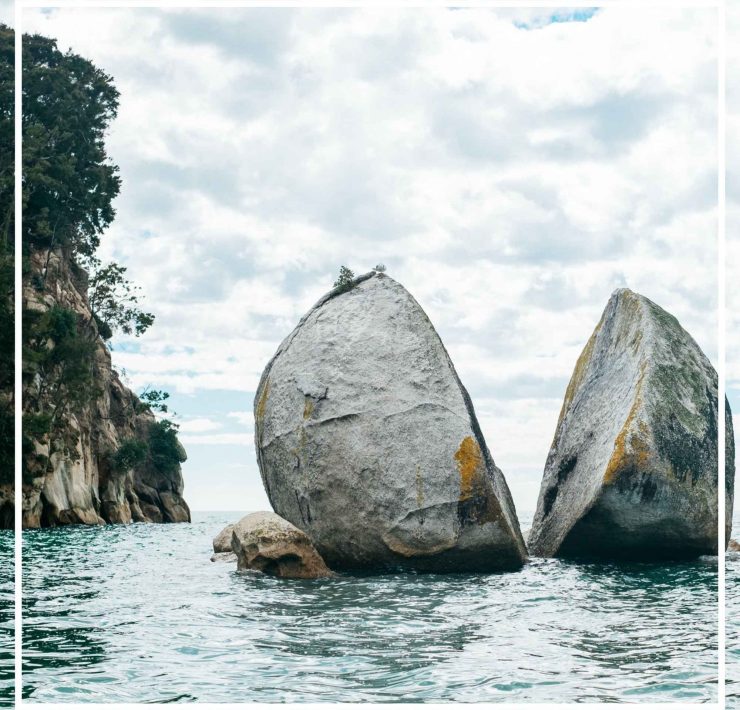What To Expect On The Kangaroo Island Wilderness Trail

After spending years as a music journalist and beer-taster, Alexis…
The Kangaroo Island Wilderness Trail is famous for an abundance of wildlife and I’m just minutes from the trailhead when I have my first encounter. A gentle rustling to the side of the path draws my attention – an echidna emerges from the brush and shuffles leisurely across it in search of termites.
Though I’m used to seeing them curled up on our five-cent piece, this flesh-and-blood iteration is infinitely cuter. My progress on the network of trails emanating from the Flinders Chase Visitor Centre slows significantly as I stay on the alert for other native icons.
[related_articles]49650,49154,46517[/related_articles]I soon discover that the recently-opened hike’s reputation is well-founded and, throughout the five-day walk, I spy koalas watching my progress from overhead and Rosenberg’s goannas sunning themselves in the middle of the path. White-bellied sea eagles and oystercatchers patrol the coastal stretches while colourful wrens and honeyeaters dart in and out of the scrub further inland.
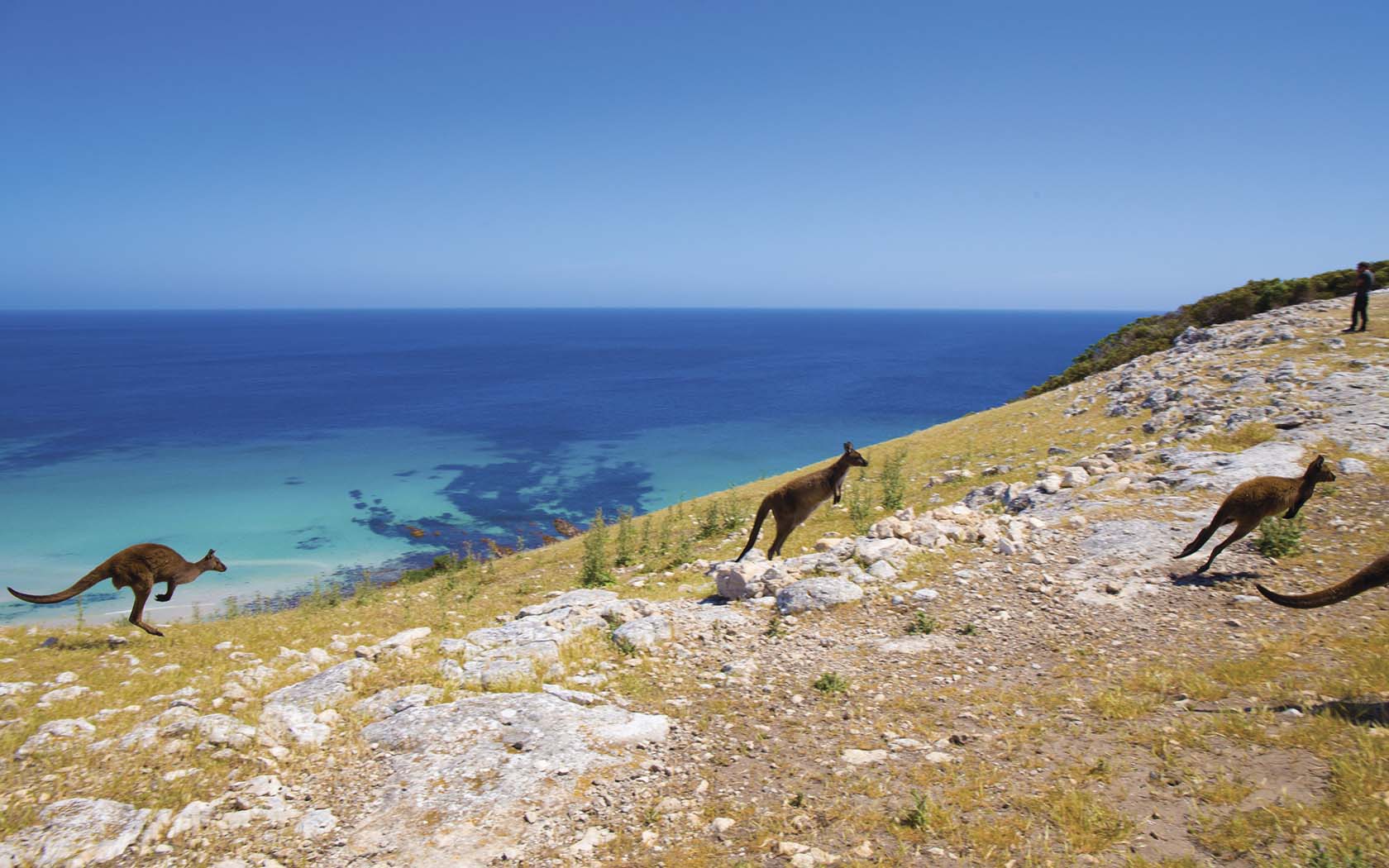
And, of course, there are kangaroos everywhere. I hear them thumping through the bush and see them crowding the paddocks on the first and last nights. They even venture down to the water at Sanderson Bay, where there’s a pristine cove of white sand near the third campsite that’s only accessible to hikers.
At night, I fall asleep to the buzzing of insects and croaking of frogs intermingling with soothing bird calls. I even get used to the piercing call of the stone curlew, which is a welcome replacement for traffic and televisions back in the city.

The Kangaroo Island Wilderness Trail begins in a fire-scarred eucalypt woodland before meandering along the lower reaches of Rocky River. The slow-flowing watercourse is the colour of black tea thanks to an abundance of tannins and the point at which it empties into the ocean and mingles with crashing waves is one of many spectacular views along the trail.
This signals the start of the coastal section, where giant breakers crash into the base of windswept limestone cliffs that feel as if they mark the edge of the world. At 14km, the second day is the longest and most exposed section of the walk, including a tough slog on the sand of Maupertuis Bay.
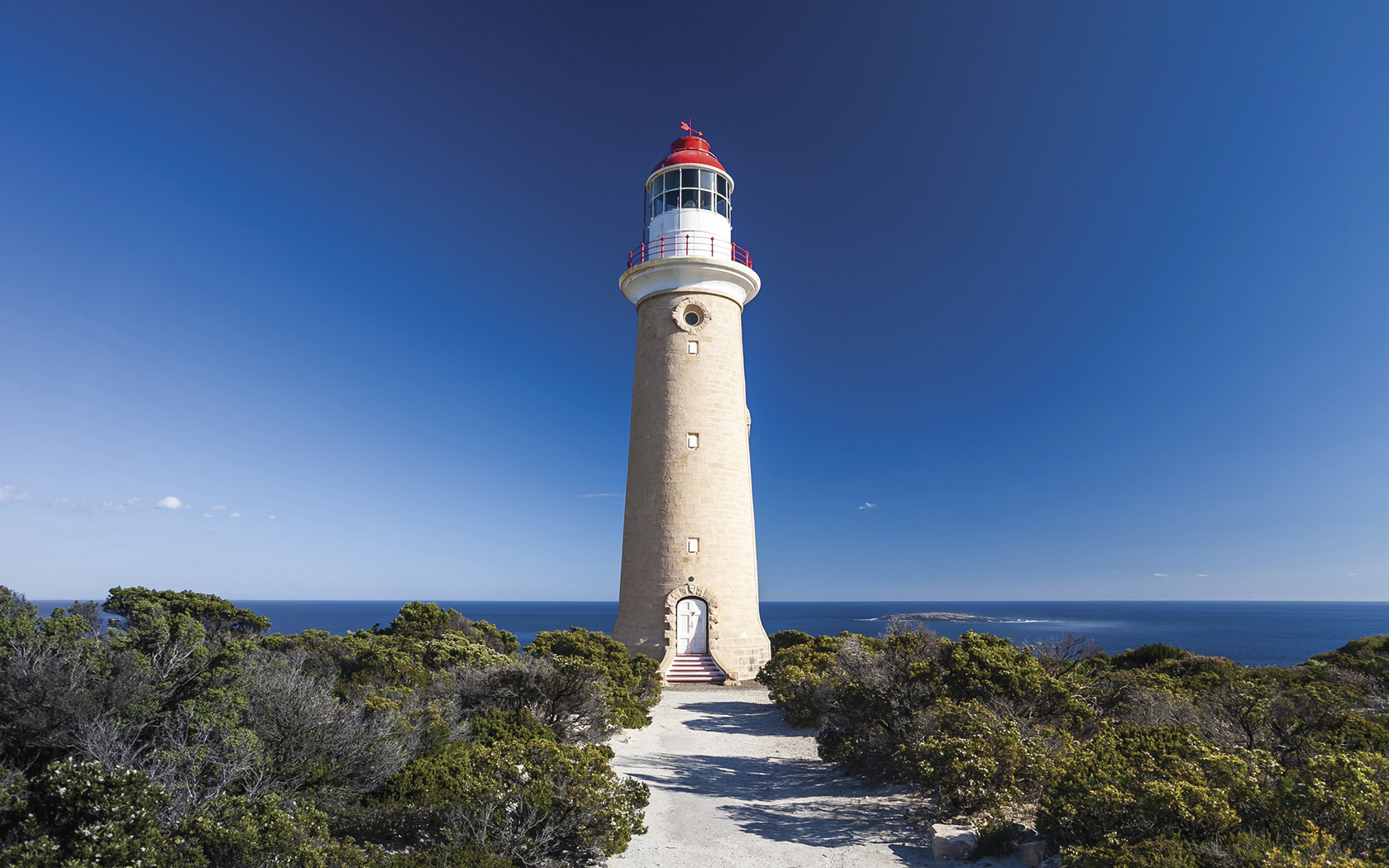
The upside of this is the chance to take a dip in the bracing waters of the Southern Ocean before reascending the cliffs to take in stunning views of the Cape du Couedic Lighthouse and the uninhabited Casuarina Islets beyond.
At the Southwest corner of the island, a side trail leads to Admiral’s Arch, a natural rock bridge created by erosion. It’s usually home to New Zealand fur seals and Australian sea lions basking on the rocks and frolicking in the water around them.
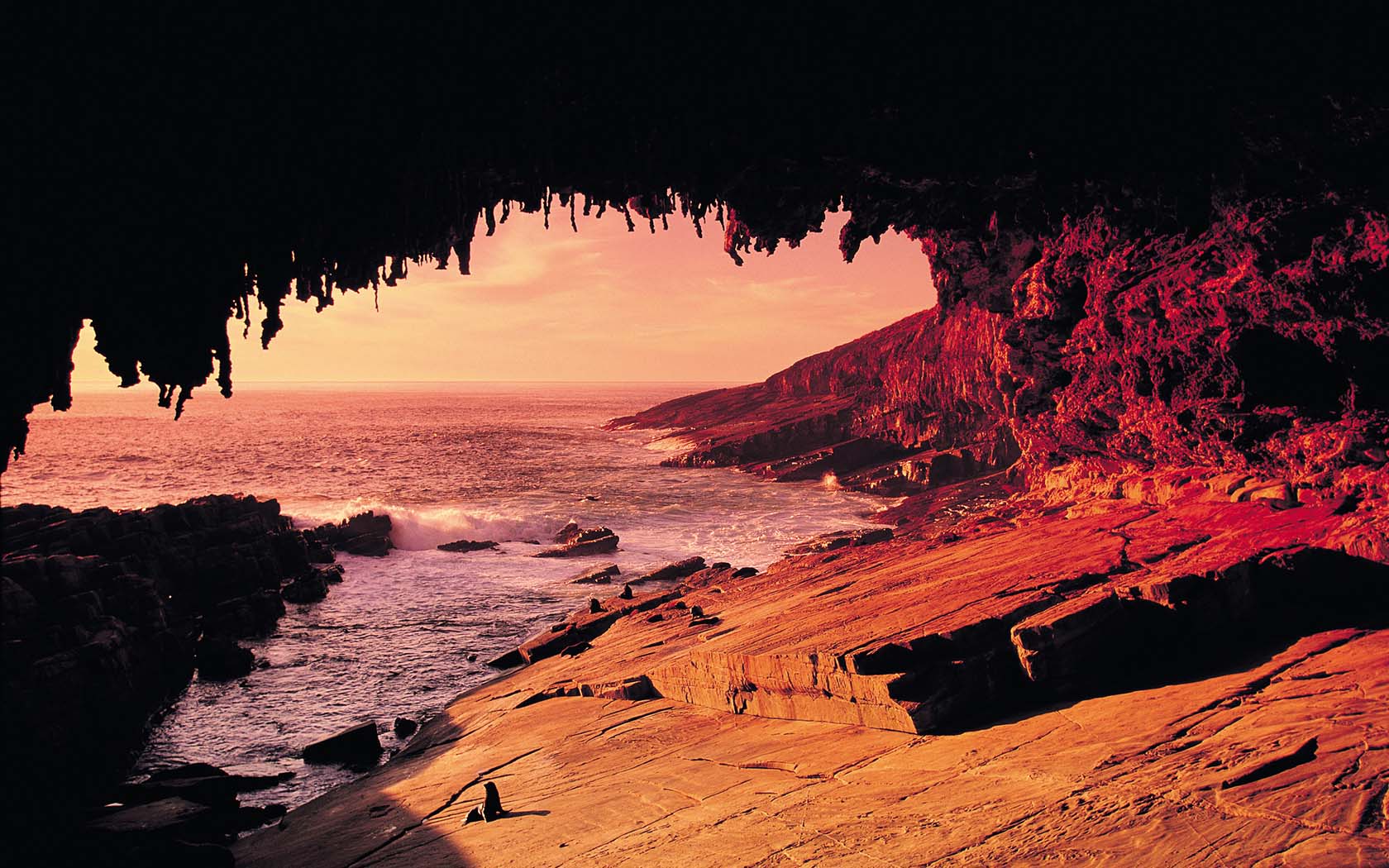
After several days walking through an unspoilt wilderness, it’s something of a shock to come across a popular tourist site, but all the buses are gone by the time the sun sets and the lighthouse beacon beams out to sea.
The next section of the trail passes by Remarkable Rocks, a natural sculpture garden of heavily- weathered granite rocks. The orange lichen that covers them contrasts strikingly with the deep blue ocean in an image that has graced a million Instagram posts, but seeing them from a different angle further down the trail is one of the joys of the third day.
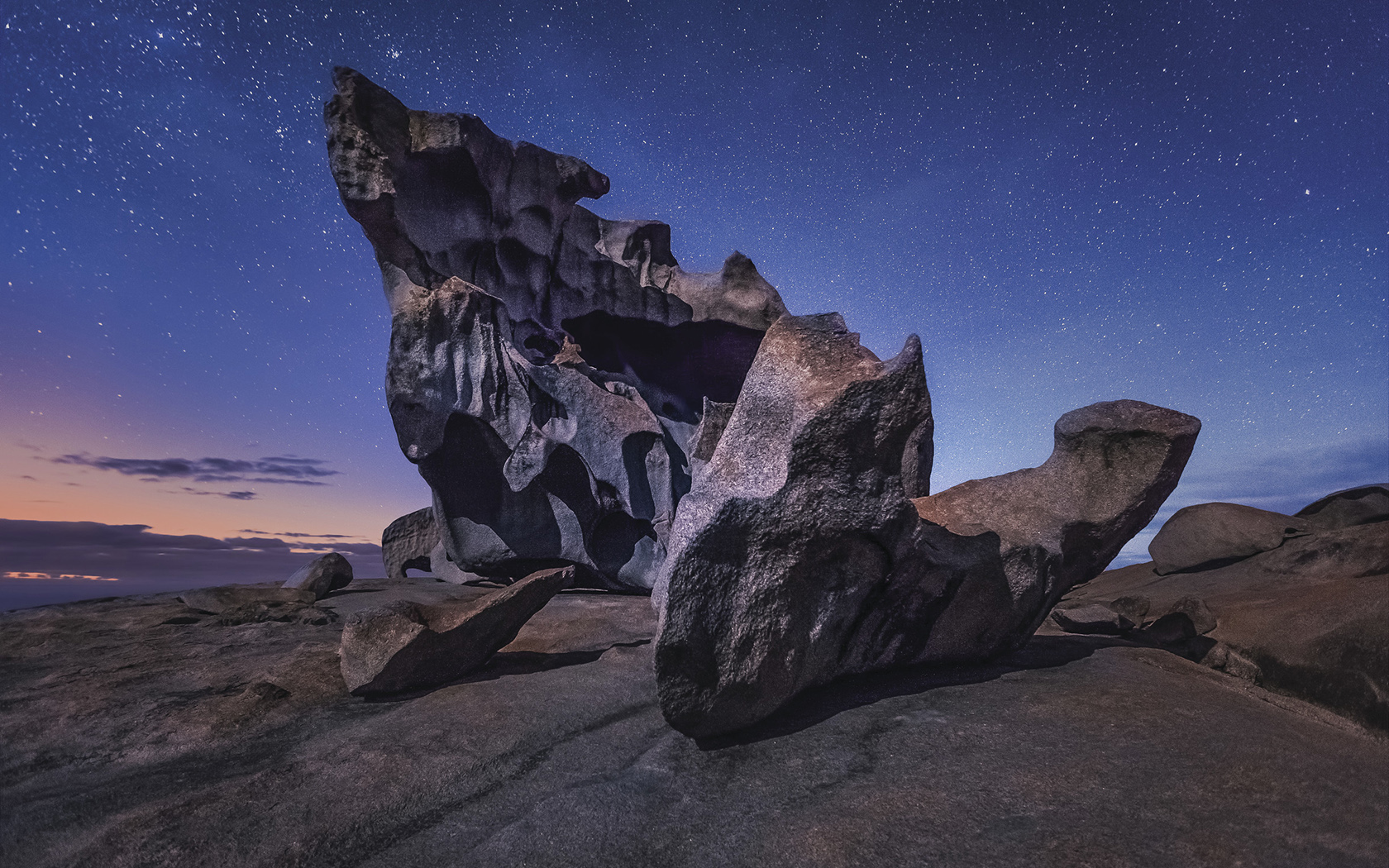
After several days of stunning coastal views, the path eventually heads inland from the limestone cliffs through a scrubby landscape of tea trees and banksias. A healthy sugar gum woodland is punctuated by vast lagoons as we approach the third of Kangaroo Island’s geological marvels.
In geological terms, the Kelly Hill Caves are incredibly young at only 2 million years old, but within lies a vast system of caverns and tunnels with plenty of opportunities for exploration.
They mark the end of the trail, but I’ve still got enough energy after the hike to try an Adventure Caving Tour. As a ranger leads the way, I scramble over rocks and under ledges, safe in the knowledge that my hiking clothes can’t get any dirtier. And even here, far underground, the remains of the megafauna that once roamed the island provide a reminder that you’re surrounded by wildlife everywhere you look on this stunning hike.

Getting to Kangaroo Island
Kangaroo Island is located just over 100km south of Adelaide. Car ferries depart from Cape Jervis, approximately 90 minutes’ drive from Adelaide’s CBD, while Qantas has direct flights to Kingscote from Adelaide and Melbourne.
The Kangaroo Island Wilderness Trail begins at Flinders Chase Visitor Centre, 100km from Kingscote. Walkers can hire a car or book a transfer to get to the Visitors Centre.
Campsites and heritage accommodation are conveniently located near the trailhead.

The Nitty Gritty
The first and last days of the Kangaroo Island Wilderness Trail are accessible as day hikes, but to complete the five-day, 61km hike, walkers need to book and pay a $161 fee. As well as entry into the national park and access to the walk, hikers receive a 1:35,000 map and a booklet with information about Kangaroo Island’s cultural and natural history. Daily numbers are capped at 24 hikers.
The best time to tackle the trail is in the cooler months from April to November, with a profusion of wildflowers making September and October particularly beautiful. Changeable weather conditions mean that warm clothing and wet weather gear is essential at any time of the year, as are sunscreen, a good hat and insect repellent for the evenings.
Most days are 12km to 14km and hikers must use the designated campsites which have shelters, toilets and rainwater tanks. Walkers must be self-sufficient, though several tour companies offer supported walks.
[related_videos]49749[/related_videos] [qantas_widget code=KGC]Check out Qantas flights to Kangaroo Island.[/qantas_widget](Lead image: Duy Dash / South Australian Tourism Commission)
After spending years as a music journalist and beer-taster, Alexis Buxton-Collins now travels the world searching for new adventures to write about, from navigating the Alps with Austria's last nomadic shepherd to hiking through the Central American rainforest in search of ancient Mayan pyramids.




